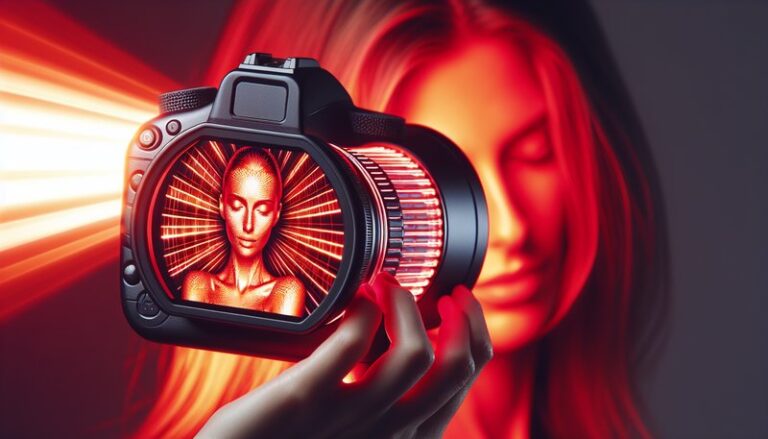Should You Use Red Light Therapy Before Bed?
Should You Use Red Light Therapy Before Bed?
Have you ever wondered if red light therapy could enhance your sleep quality?
This article explores the use of red light therapy before bed, examining its benefits, considerations, and alternatives to help you make an informed decision. We’ll delve into what red light therapy is, its potential to improve sleep, and whether incorporating it into your night routine is advisable.
Key Takeaways
- Red light therapy can promote relaxation and potentially improve sleep quality.
- Timing and duration of therapy sessions are critical for bedtime applications.
- Always consult with a healthcare professional before starting any new health regimen.
What is Red Light Therapy?
Red light therapy (RLT) is a treatment that uses low-wavelength red light to promote healing and wellness. It has been researched for various applications, including skin rejuvenation, pain relief, and enhancing athletic performance.
Get the full rundown in Can Red Light Therapy Enhance Vision?
RLT works by penetrating the skin’s surface and stimulating the cells’ mitochondria, leading to increased production of adenosine triphosphate (ATP), which is essential for energy. This cellular boost can aid in recovery processes, reduce inflammation, and even improve mood.
How It Works
Red light typically operates between 600 to 650 nanometers, which is within the spectrum that the human body can absorb effectively. Devices range from handheld units to full-body panels, giving users flexibility in treatment options.
What are the Benefits of Red Light Therapy?
Engaging in red light therapy before bedtime may offer several benefits, particularly for those seeking to improve their sleep quality.
Improved Sleep Quality
Studies suggest that red light exposure can stimulate melatonin production, the hormone responsible for regulating sleep cycles. Increased melatonin may lead to deeper and more restful sleep.
Enhanced Relaxation
Red light therapy can induce a calming effect, helping to alleviate stress and tension. This relaxation is crucial as it prepares the body for a good night’s sleep.
Reduced Inflammation and Pain Relief
For individuals suffering from chronic pain or discomfort, RLT can ease symptoms, allowing for a more relaxed evening routine and better sleep.
Support for Seasonal Affective Disorder (SAD)
For those affected by SAD, red light exposure may help combat depressive symptoms, particularly during winter months when natural light is limited.
Is it Possible to Use Red Light Therapy Before Bed?
Yes, using red light therapy before bed is feasible and can be beneficial for many individuals. However, there are several considerations to keep in mind for optimal results.
What are the Advantages of Using Red Light Therapy Before Bed?
Using RLT in the evening can provide numerous benefits, including:
Alignment with Circadian Rhythms
Using red light therapy in the evening can be more natural than exposure to blue light from screens, as it aligns better with the body’s circadian rhythms.
Convenient Integration into Nighttime Routines
Incorporating RLT into your nightly routine can be straightforward, whether you’re unwinding with a device while reading or as part of your skincare regime.
Read our discussion on Does Red Light Therapy Help Sun Damage?
What are the Disadvantages of Using Red Light Therapy Before Bed?
While there are benefits, potential disadvantages also exist:
Potential Overstimulation
If not used properly, some individuals may find that their treatment sessions are too long or too close to bedtime, making it harder to wind down.
Cost of Equipment
Quality red light therapy devices can range in price, which might be a barrier for some individuals interested in trying this therapy.
What are the Things to Consider Before Using Red Light Therapy Before Bed?
Before integrating red light therapy into your pre-sleep routine, consider the following factors:
Device Quality
Ensure that the device you choose is reputable and has been tested for safety and efficacy. Look for products with good customer reviews and a solid track record.
Timing of Sessions
Aim for shorter sessions (around 10-15 minutes) and trial different times to find what works best for your sleep patterns.
Personal Health Conditions
Consider any pre-existing health conditions. Consulting a healthcare provider is wise, especially if you’re uncertain how RLT might affect you.
What are the Alternatives to Red Light Therapy?
If red light therapy doesn’t suit your preferences, several alternatives can promote relaxation and improve sleep quality:
Meditation and Mindfulness
Practicing mindfulness or meditation can help reduce stress and improve sleep, making it a great alternative to RLT.
Aromatherapy
Using essential oils, particularly lavender, can create a calming atmosphere conducive to better sleep.
Sleep Hygiene Practices
Implementing good sleep hygiene—such as maintaining a consistent sleep schedule, creating a comfortable sleep environment, and limiting screen time before bed—can significantly enhance your sleep quality.
Conclusion: Is it Recommended to Use Red Light Therapy Before Bed?
Using red light therapy before bedtime may offer various benefits, such as improved sleep quality, relaxation, and pain relief. However, it’s essential to consider factors like device quality, session timing, and personal health conditions. Overall, if incorporated thoughtfully, RLT can be a valuable addition to nighttime routines for many individuals.
Frequently Asked Questions
How long should I use red light therapy before bed?
Most experts recommend using red light therapy for about 10-20 minutes before bed to promote optimal relaxation and sleep benefits.
Can I use red light therapy every night?
Yes, many users incorporate red light therapy into their nightly routine. Just ensure you listen to your body and adjust usage as needed.
Are there any side effects related to red light therapy?
Red light therapy is generally considered safe with minimal side effects. Some users may experience mild redness or irritation at the treatment site.
Can I use red light therapy while sleeping?
While possible, it’s typically more effective to use RLT in short, targeted sessions before sleep rather than during sleep to maximize its benefits.
What should I look for in a red light therapy device?
Look for devices with appropriate wavelength specifications (around 600-650 nm), safety certifications, user reviews, and ease of use to ensure an effective treatment experience.






